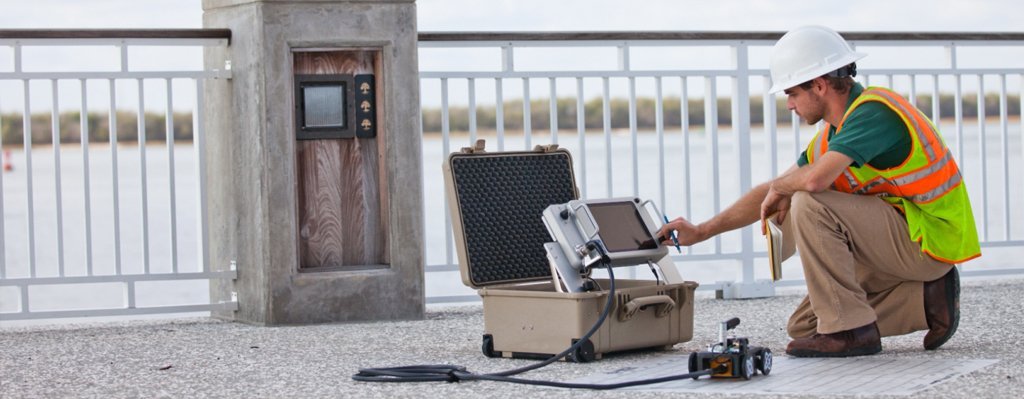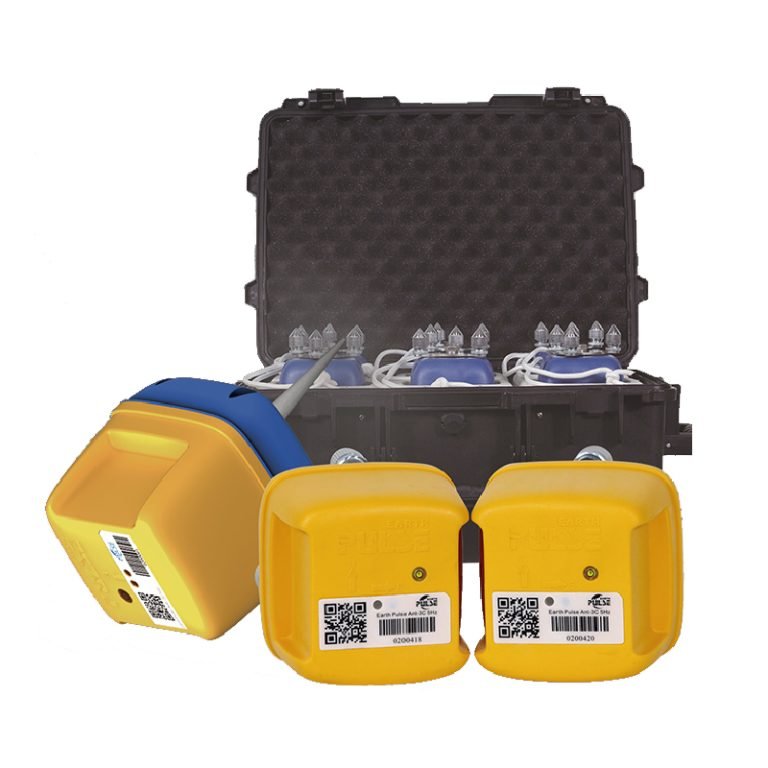Welcome to Geotech!

Radar solution: Highway subsurface cavity detection solution
- Solutions, Radar Solutions
- 44 views
Description
Ⅰ. Overview
Due to the excavation of underground pipelines, a road area has sunk in the construction area and a landslide has occurred. Originally, a detailed two-dimensional resistivity imaging geophysical survey method could be used to understand the characteristics of the changes in the foundation soil layer on the road surface. However, because the asphalt layer is too thick for the drill to penetrate, the resistivity imaging geophysical survey method cannot be used for investigation. The measurement data collected only on the road island for comparison showed that the soil layer under the road was discontinuous. Based on the abnormal changes in imaging, the resistivity is obviously much higher than the original foundation soil. Therefore, in the case of a repaired road, we can use depth sensing radar or GPR technology to test the road surface condition and then determine the underground condition.
II. Project Objectives
To understand the road surface base condition and study the changes in the road base using ground penetrating radar (GPR) survey.
III. Location of measurement area and measurement line
The measurement line length of the middle lane on both sides of the road is about 40 meters. The location of the measurement line is shown in Figure 1.


IV. Ground Penetrating Radar (GPR) Survey Principle
Ground Penetrating Radar (GPR) is a non-invasive technology used to detect underground structures. Its basic principle is to use the propagation characteristics of electromagnetic waves in underground media to obtain underground information. GPR generates images or cross-sections of underground structures by emitting high-frequency electromagnetic waves and receiving reflected signals. (As shown in Figure 3).

Ⅴ. GPR survey work
Survey tools
1. The radar depth meter is Geotech’s Geopro T-Series 2D Ground Penetrating Radar (GPR), which is connected to the transmitter (antenna) via a cable and sent back to the control and processing section (as shown in Figure 4).
2. Software for processing and analyzing data: Reflex version 5.0
Determine the survey line and site conditions. The survey lines are shown in Figure 5. There are a total of 6 survey lines, each 40 meters long, covering 2 inner lanes on both sides, consisting of survey lines LINE R1 R2 R3 (R-Side) and survey lines LINE L1 L2 L3 (L-Side) (as shown in Figure 5). The condition of this area is the inner lane of the road. Left and right sides (as shown in Figure 6)
Field work
The instrument is calibrated according to the measurement distance. As the wheel moves the device relative to the distance, the position data is acquired and the transceiver is moved at a constant speed. Continuous data is acquired along the measurement line (as shown in Figure 7). The acquired data is displayed, processed and stored in the GeoPro2 device.








VI. Survey Results
The GPR results show the changes in the soil layer under the road surface. At a depth of about 2.5 meters, there are steel bars reinforced in the concrete layer to support the asphalt layers of different thicknesses. The survey results are presented in the form of lines from southeast to northwest (right → left).
For the right lane R-SIDE, survey line LINE R3, and the outer edge of the lane, no obvious soil changes were found (Figure 8). As for LINE R2, the middle lane line and LINE R1, the inner edge line near the center island (Figures 9 and 10), a compacted soil area of about 7 meters long was found, and the GPR signal did not clearly show that it was an air cavity.
The left lane L-SIDE is similar to the right lane, that is, LINE L1 at the inner edge and LINE L2 in the middle of the lane (Figures 11 and 12) are in the compacted soil area, about 6 meters long, and far from the GPR signal. It is not clear whether there are air pockets in this area. For the outer lane edge survey line LINE L3, no obvious soil changes were found (Figure 13).
Figure 14 shows the survey results of all 6 survey lines. Figure 15 shows areas where the soil compaction differs from the normal situation.














VII. Conclusion
GPR radar depth survey was used to find the changes in the soil layers that constitute the foundation surface.
The GPR measurement results show the changes in the soil layers under the road surface. At a depth of about 2.5 meters, there are reinforced concrete layers on the left and right sides. Abnormal signals were detected in asphalt layers of different thicknesses, and a soil compaction area in the middle of the inner lane was estimated to be about 6-7 meters long. From the GPR signal, it is not clear whether there are air holes in this area. For the survey line, there is no obvious soil change at the edge of the outer line away from the center island.
FAQ
The double tap has a large current and can be used for IP testing to get more accurate data.
High-density apparent resistivity method is an array prospecting method, also known as automatic apparent resistivity system, which is developed from direct current method. Its function is equivalent to the combination of quadrupole sounding and electrical profiling method. The artificial electric field is formed by supplying electricity to the underground through electrodes. The distribution of the electric field is closely related to the distribution of the resistivity of the underground rock and soil medium. By measuring the artificial electric field at different parts of the surface, the distribution of the apparent resistivity of the underground medium is understood, and the underground geological structure is inferred and interpreted based on the distribution of the apparent resistivity of the rock and soil medium.
The principle of high-density electrical method is the same as that of traditional resistivity method. It is a combination method of multiple devices and multiple pole distances that integrates electrical depth sounding and electrical profiling method, which can obtain the conductivity characteristics of two-dimensional underground media. It has the characteristics of multi-device data acquisition in one pole arrangement, and highlighting abnormal information by obtaining ratio parameters, which greatly increases the amount of collected data, improves work efficiency, and ensures the accuracy and reliability of the pole running process.
This method is particularly sensitive to the water content of the surrounding rock. If the surrounding rock is broken and contains water, its apparent resistivity is significantly reduced. The apparent resistivity of intact and hard rock and soil is significantly higher than that of the surrounding rock in the fault zone or broken zone and water-rich zone. This method has a clear principle and intuitive images. It is a geophysical method with high resolution. In recent years, with the improvement of computer data acquisition technology, the exploration efficiency has been greatly improved, the coverage area and detection depth of the profile have been increased, reliable data can be obtained in a strong interference environment, the signal-to-noise ratio has been greatly improved, and the geological body can be accurately detected. This method has been widely and successfully applied in engineering and hydrogeological exploration and exploration of mineral and water resources.
(1) Application in coalfield and mine goaf detection
(2) Non-destructive detection of termite nests in dam foundations
(3) Karst and foundation surveys of railways, roads and tunnels
(4) Delineation of stratum lithology boundaries
(5) Survey of the leakage range of landfills
(6) Ancient tomb surveys
(7) Detection of sewage pipes
(8) Non-destructive testing of leakage in reservoirs and river dams
(9) Detection of bedrock fracture zones
(10) Soil salinity and water quality surveys
(11) Detection of ancient tunnels, air-raid shelters, metal burial sites, etc.
(1)The high-density resistivity method is based on the resistivity method, so it is suitable for all underground explorations with obvious conductivity differences;
(2)Any medium underground will have a weak polarization potential at the moment of power on and off, which will affect our measurement of the true potential difference. When the electrode distance is small, the loop current is large, which has little effect on the measurement results; when the electrode distance is too large, the interference potential is close to the effective potential, which has a greater impact on the measurement results. Therefore, due to the influence of the power supply electrode distance, the exploration depth cannot be too large, generally within 100m. When the conductivity of the soil medium is good, it can be appropriately increased, and the exploration depth in the soil medium with poor conductivity is appropriately smaller;
(3)It is generally less used in cities, near large transmission lines, etc. due to site restrictions and industrial stray current interference; 4. In areas such as concrete pavements and exposed bedrock surfaces, it is also less used due to the difficulty of electrode layout.
-1.png)




